This may be the most difficult TravelQuest I’ve ever written. I’m not sure why except to say my eyes and mind are still full of the wonderful place known to the rest of the world as New Zealand, and to the Maoris, as Aotearoa, the Land of the Long White Cloud.
True enough, we saw the brilliant blue of the sky and there, just above the mountains or hills (depending upon where you were) would be a long white cloud stretching itself across the horizon. We’d not seen anything quite like it and obviously, neither had the Maori.
We had determined a long time ago that a trip to New Zealand was on our horizon. We’d traveled to Australia twice and could not, in all good conscience, go back until we’d seen its neighbor, the two islands to the east, so close to the International Date Line, that the time difference from here is 19 hours. In many ways, it was actually an easier time exchange than traveling to Europe.
Nineteen hours is so close to a full day ahead, that you just remind yourself that everyone at home is still on yesterday.
We caught an Air New Zealand flight out of San Francisco on New Year’s Eve, skipped New Year’s Day, and arrived in Auckland, at the top of the North Island, on Thursday, January 2, a New Zealand holiday. Before 6 in the morning. Really. I’m not sure of the logic behind that except, having slept on the plane, it does tend to get you up bright-eyed and busy-tailed when breakfast is served at 4:30 AM, plane time. (Traveling so long and far on a plane is like traveling cross-country on trains in Australia or Canada: The time is what the crew says it is.)
We were met by a driver and presented with our trip paperwork. Perhaps now is the time to provide the basis of this touring via driver. When we were last in Australia, we rented a car (twice!) and were almost killed the same number of times. New Zealand, like Australia and England, drives from the “wrong” side of the car on the “wrong” side of the road. I wasn’t going if we were repeating these harrowing experiences. Hence, the drivers. For whatever consolation it is, we visited with English couples who had rented cars and were having the same problems with the steering column that Dana had had (among other things): the windshield wipers and the turn signals are placed according to manufacturer, not standard to the country.
We briefly toured through Auckland on our way to the ferry which would take us to Waiheke Island, a weekend and holiday destination for the city. Outside the ferry building was a shipping container painted with cats. I didn’t know it then, but but the end of our journey, I’d be more familiar with this work.
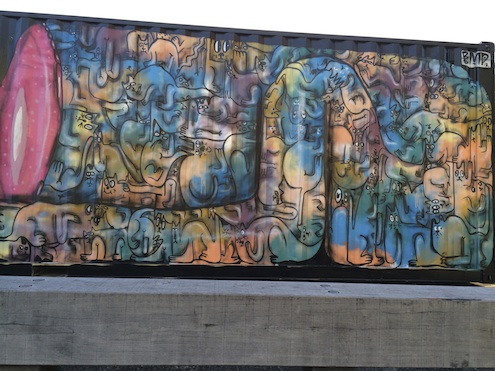
Our tickets were for the 9 AM ferry, but it wasn’t even 7 and our driver didn’t want to leave us there for two hours, so he made sure we got on the earlier ferry. Our Waiheke B&B host was still busy with his guests so he arranged a taxi for us. Once he deposited our luggage in the hall closet, he pointed towards the town of Oneroa and we spent the morning walking. In hindsight, we should have booked a room for the night before so we’d have had a place to shower immediately we arrived, but who knew the driver was going to put us on the early ferry?
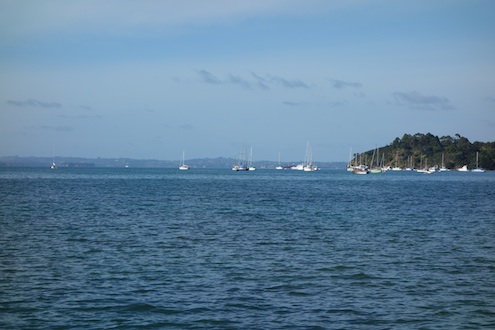
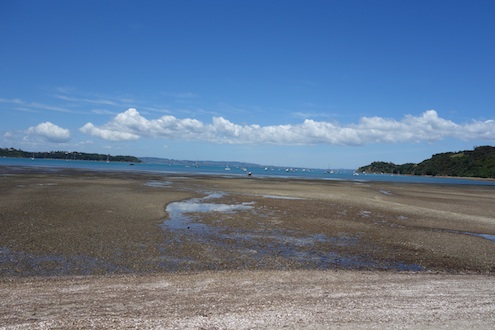
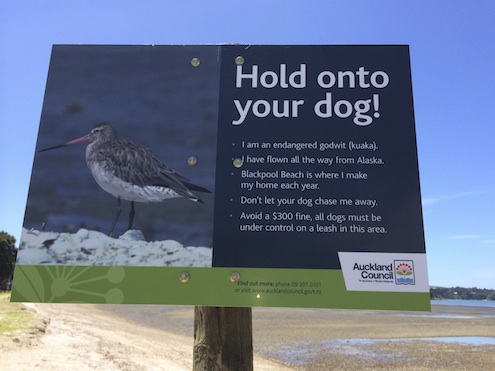
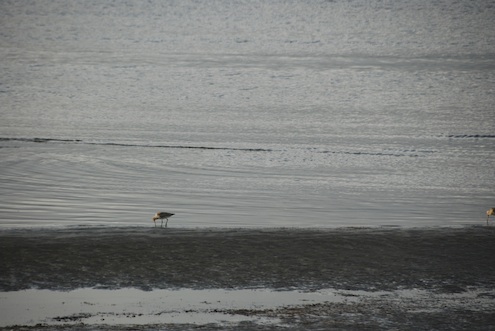
Oneroa is a pleasant tourist town, with lots of small shops and many places to eat. It became progressively busier as the morning went along and more ferries arrived. We went to the beach, where we were way overdressed, having clothed ourselves 30-something hours earlier in Bonham. But it was relaxing seeing all the holiday families and familiarizing ourselves with the money, what items were going to cost at the grocery (celery sold by the half stalk, red peppers priced the same as here), and reading posted menus, some establishments stating a “holiday surcharge” of 10-20%, a concept truly foreign to us. Eventually, we ate lunch and wandered back to Breakfast on the Beach, our home away from home for the next two nights. There we sampled delicious food, met a very tired family from Finland (they’d been in Australia for two weeks already), and toured the Waiheke wineries, an up and coming segment of New Zealand viticulture, but none large enough to export to us.
Even though Waiheke’s wine industry is considered new by New Zealand standards, by the world’s, New Zealand’s entry into commercial and international viticulture is also new. When we buy New Zealand wine, we most often pick up a bottle of Sauvignon Blanc, a white wine, or perhaps a Pinot Noir, a red. But this land of much-exported wine didn’t have a true wine industry until 40 years ago. In 1973, Britain joined the European Economic Community and New Zealand’s major market for dairy, meat, and agricultural products was gone. In order to survive, New Zealand had to look elsewhere for its national livelihood. While dairy is still the major export product and New Zealand is the world’s major exporter of milk, the introduction of commercial winemaking saved the day.
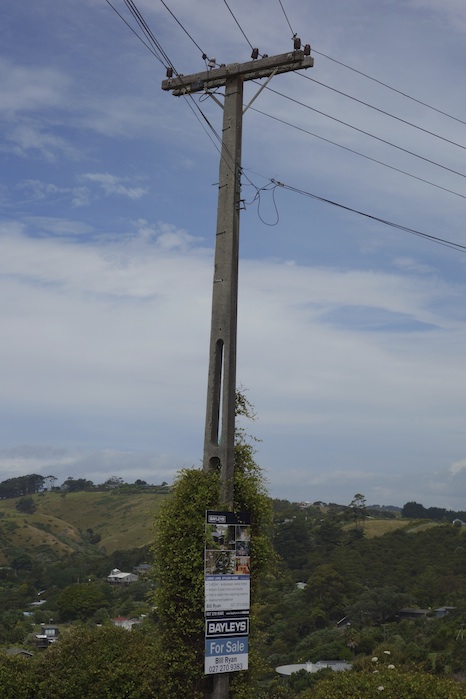
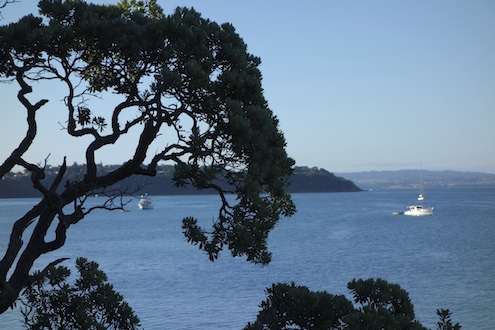
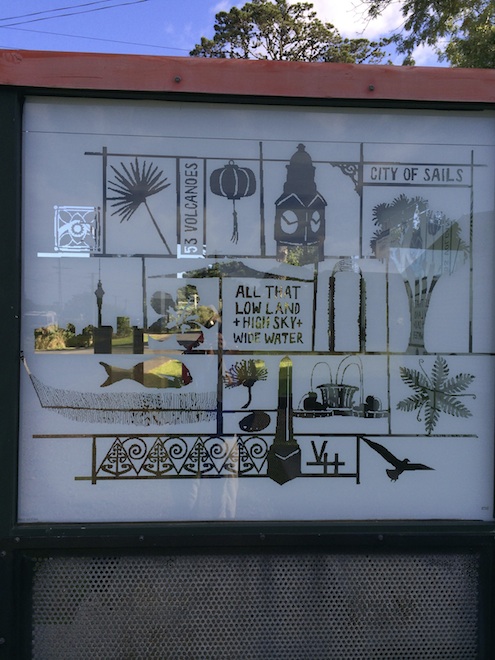
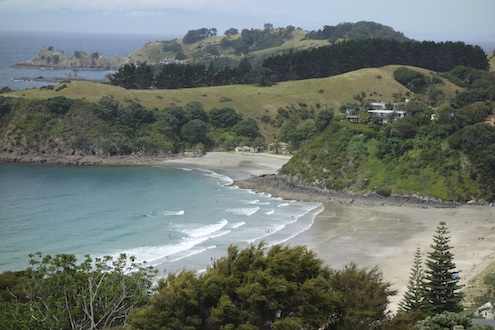
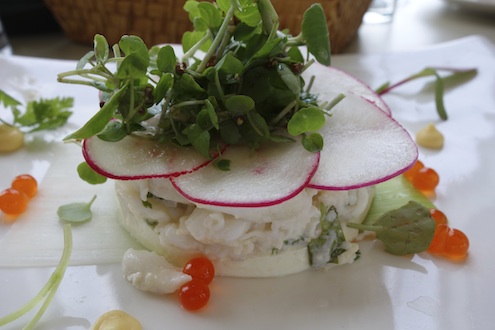
What a difference two days make! We had arrived Thursday morning on a ferry with maybe two dozen passengers. Standing in line Saturday morning waiting for the return ferry to Auckland, we watched droves of sun-seekers hurry off. The weekend was going to be busy on Waiheke.
Our next stop was Napier, a city on the east coast in the Hawke’s Bay viticulture area. In 1931, Napier was destroyed by an earthquake and had to rebuild. The architectural style at the time was decidedly Art Deco and so Napier rebuilt to be current. Then they had the good sense to protect it, becoming, along with Miami Beach, one of two best-preserved Art Deco cities in the world. In 2007, it was nominated as an UNESCO World Heritage Site. In a tribute not only to the 256 who died in that earthquake but also to those that survived and revived, the New Napier Arch on the seawall proclaims: Courage is the thing: all goes if courage goes, attributed both to J. M. Barrie in 1922 and Joseph Addison, three centuries earlier. Like the majority of towns in New Zealand and AU we had visited, we saw a central monument to the men who served in WWI.
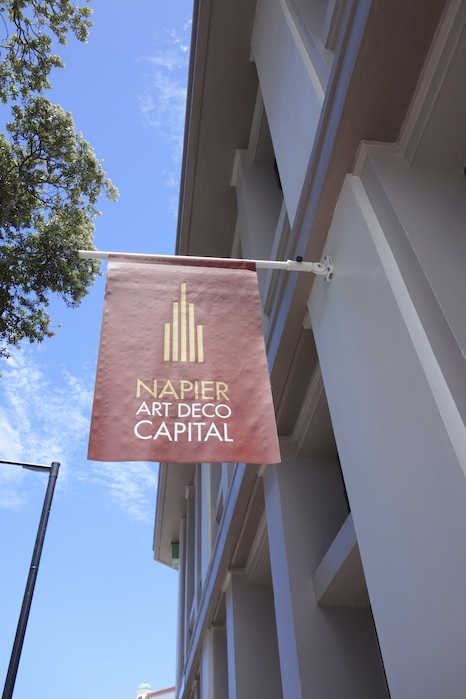
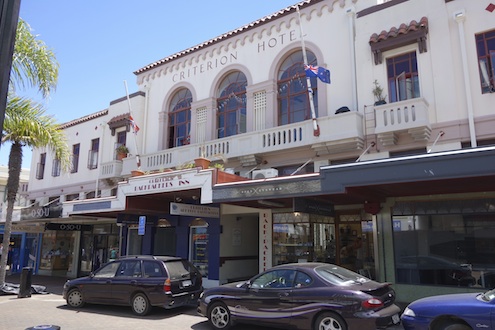
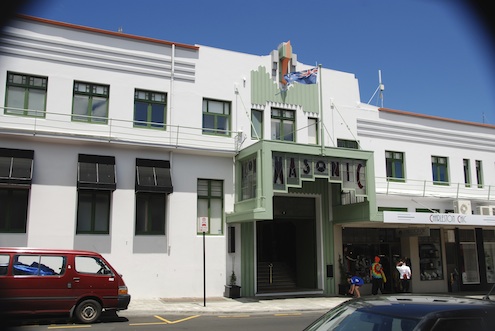
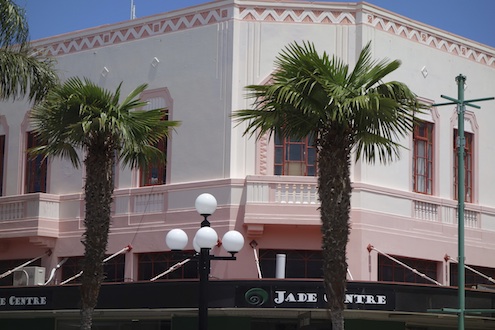
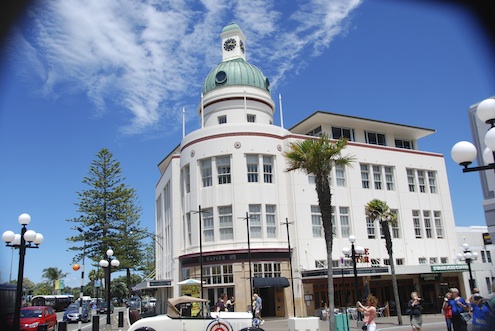
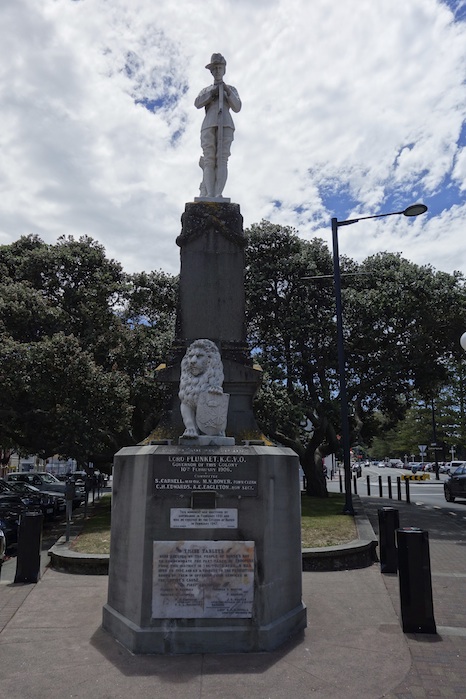
To say it was windy the day we had our tour of Napier and the surrounding Hawke’s Bay wineries, is understatement.
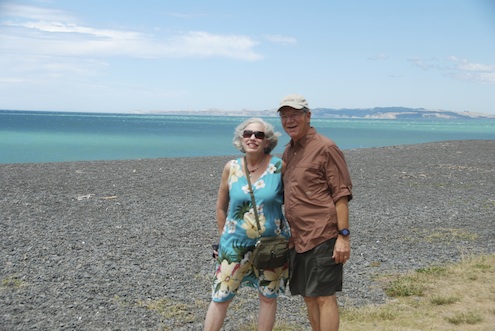
Hawke’s Bay is known for its Syrah and Chardonnay. We wound our way to wineries and scenic outlooks and viewed apple orchards. New Zealand isn’t just the home of wine! We also caught sight of what may (or may not but we’d never heard of it before) be unique to New Zealand: letting sheep graze the vineyards in order to keep the grass and weeds in check. Once the fruit begins to ripen, the sheep become ovine non grata.
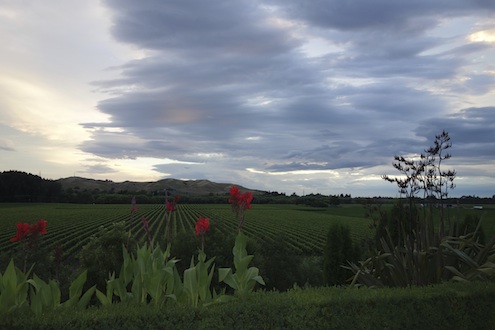

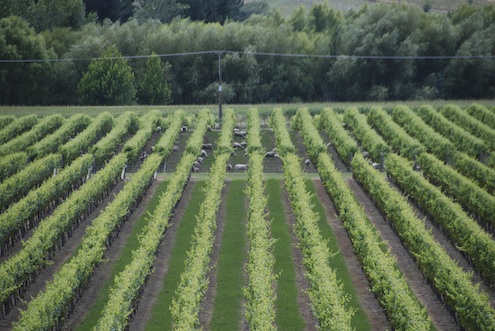

We were already learning that even if it were on the other side of the world, so to speak, in many ways New Zealand was quite familiar. We could drink the water from the tap, speak the language, understand the rules, use the money. It became different because we couldn’t drive safely, cross the street without looking both ways twice, or know what we weighed because the bathroom scales were in kilograms/stones. (This was a vacation. Who wanted to do this anyway?) This is the land of the half-flush (what a good idea!), the long black and flat white and a half-dozen other varieties of coffee which is why I carried Starbucks VIA with me. In order for an electrical outlet to work, it has to be turned on, like flipping an on-off button on a coffeemaker. It took a few times to get that one through our heads.
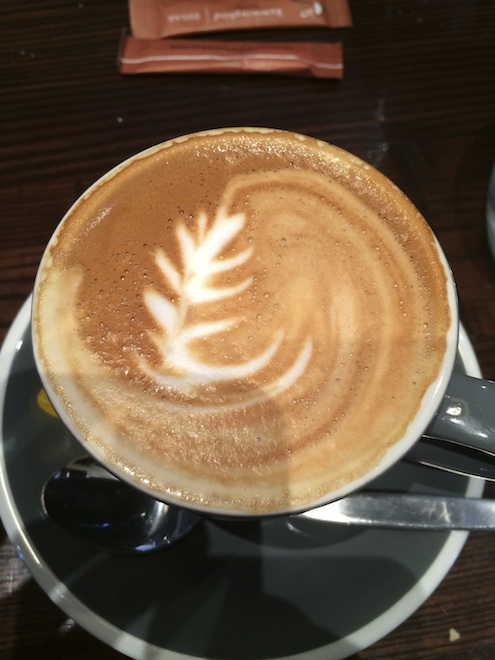
From Napier, it was on by car to the Martinborough wine region and a wine-sampling we won’t soon forget.
Kay Layton Sisk's latest is a woman's fiction novel, After the Thunder Rolls Away, available for Kindle, Nook, and iOS devices. Visit Amazon, Barnes and Noble, and iBooks for your copy.